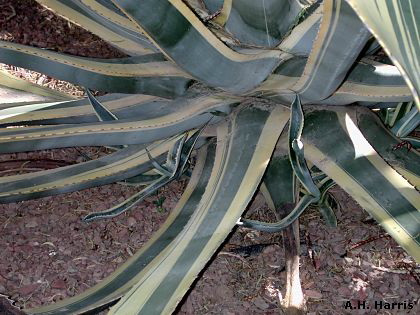

Many an adult desert dweller recognizes the same agave first seen as a child. Only in his maturity do blooms appear. Thus grew the myth that these plants flowered only after 100 years, a myth responsible for another common name, century plant. Mistaken, but not by that far, for some species may take up to 30 years to flower. But once blooming is over and the seed set, the plant's life work is over, and it dies.
If this were all there was to it, it would make little sense.
There's far too long a time for things to go wrong. Like any smart gambler, though,
agaves hedge their bets. Through the years, they send forth suckers, each a faithful
copy of its parent. Why the costly drive to set seed, then, if it can spawn a crop of
clones so easily? Apparently for the basic reason behind all sexual reproduction—to
spread genetic variability among its offspring. If one clone is vulnerable, all are,
being identical. But with variety, some "children" are almost sure to
survive.

Contributor: Arthur H. Harris, Laboratory for Environmental Biology, Centennial Museum, University of Texas at El Paso.
Desert Diary is a joint production of the Centennial Museum and KTEP National Public Radio at the University of Texas at El Paso.

An Agave with its "pups" peeking out from around its skirts